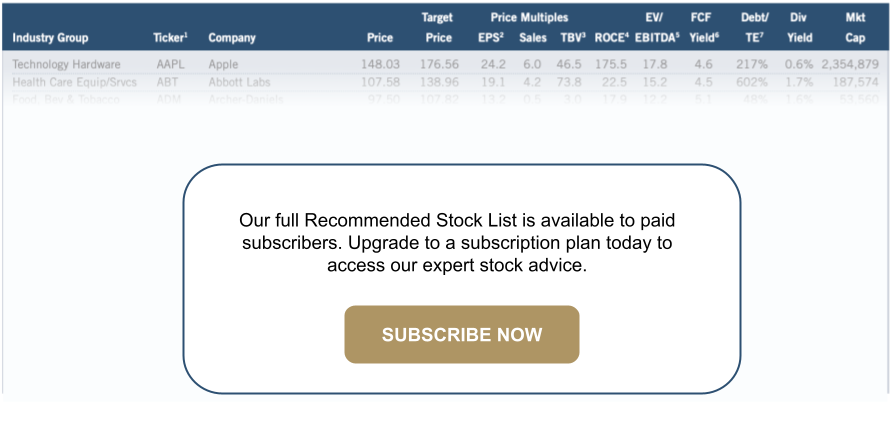
Every month, The Prudent Speculator produces a newsletter that includes a market summary, helpful charts and graphs, recent equity market news, economic outlook and specific stock investment strategies focused on value stock investing. This month, we again add stocks to our four-newsletter portfolio, while our Editor’s Note offers more perspective on Election 2024 and our Graphic Detail looks at Seasonality and the Presidential Cycle. Note that the entire list is available to our community of subscribers only.
Editor’s Note: Election 2024, Seasonality and The Presidential Cycle
Even after hitting Delete and Report Junk, the text messages just keep on coming. Somehow both political parties have decided that your Editor is a voter they want to hit up for donations. One message challenged: From Trump: I’M ADDRESSING THE NATION AT MADISON SQUARE GARDEN. If every PATRIOT chips in $10, we’ll set a RALLY RECORD. Another pleaded: Kamala SINKING in Pennsylvania: 46% – 48%. We need your help!!! RUSH $20 to DEFEAT DONALD TRUMP NOW.
We think most will be happy for the political campaigning to conclude, even as we suspect that it will takes more than a few days for all the votes to be counted and recounted in the 2024 elections. Obviously, the race for the White House has dominated the headlines, and we have joined in by publishing two Special Reports and an Insight on the subject, as well as taping a The Business Brew podcast and hosting an Election Q&A webinar.
Of course, no matter the medium, it should come as little surprise that the only endorsement we have offered is in support of a broadly diversified portfolio of undervalued stocks to be held for its long-term appreciation potential. As we wrote in our first Special Report back in August: Many folks are fretting that a win for the other party will spell trouble. No doubt accentuated by broadcast, print and social media, the list of worries seems to be growing. No matter the side of the aisle, it is hard to shake a general feeling of angst. However, we have yet to see a period, especially a prolonged one, where investing with politics as the criteria works out.
We have published numerous charts to back up our belief that tuning out the election noise and remaining focused on long-term investment objectives is the way to go, even as we are braced for plenty of equity market volatility after Election Day.
No doubt, this advice isn’t as exciting as what we recently read in The Wall Street Journal. A hedge fund manager proclaimed, “We don’t have a crystal ball,” but he recently bought bullish call options that would pay out if stocks rise. He declared, “The market has an expectation that, generally, a Trump win is good for the market and that a Kamala win would be bad for the market. I think there is a possibility that if Kamala wins…markets could rally.” To be sure, history shows stocks have risen, on average, whether it is an “R” or a “D” in the Oval Office, but just to be safe, this fellow also bought options that could pay off if the election results are uncertain and stocks turn “choppy.”
Given that the majority of options expire worthless, our guess is that trying to cover multiple short-term outcomes will not prove as lucrative in the fullness of time as simply standing pat and we very much like the growth prospects for our mix of stocks no matter who occupies 1600 Pennsylvania Avenue. Even better, TPS Portfolio sports a forward P/E ratio of 14.4, well below the 24.2 of the S&P 500 and even less than the 19.2 of the Russell 3000 Value index (R3KV). It also boasts a dividend yield of 2.5%, compared to 1.3% for the S&P and 2.1% for the R3KV, while we note that dividend income received on this portfolio has more than doubled over the past 10 years even as those payouts have been withdrawn.
Anything can happen as we go forward, and we realize that wars continue in the Middle East and Ukraine, but the U.S. economy grew 2.8% on an inflation-adjusted basis in Q3 and corporate profits for the period have been favorable even if stock-price reactions have not always been positive. Further, inflation has continued to come down toward the Federal Reserve’s 2.0% target, while the latest projections from Jerome H. Powell & Co. for 2.0% real GDP growth in both 2025 and 2026 seem reasonable, suggesting that the U.S. central bank will likely retain its current accommodative monetary policy stance.
It isn’t always easy, but we agree that political opinions are best expressed at the polls, not in a portfolio.
“Stop trying to predict the direction of the stock market, the economy or elections.” — Warren Buffett
Graphic Detail: Seasonal Favoritism
Ninety-five years of data show September and October, on average, to be the two worst months of the year. This time around, the scary duo was volatile, providing both tricks and treats, but when all was said and done, the period ended with a slight advance.
Nevertheless, we are pleased that the calendar has hit the Thanksgiving month, and the start of the seasonally favorable six months of the year. Indeed, Halloween to May Day has seen terrific performance, on average, since 1990 and going all the way back to 1929. And Value Stocks historically have asserted their dominance during this span, even as Dividend Payers have lagged Non-Dividend Payers. Happily, despite the war in Ukraine, hostilities in the Middle East, the usual economic worries and questions about potential Federal Reserve action, the latest November-through-April total-return more than lived up to its positive precedent as the Russell 3000 Value index soared 18.37%.
Because the other six months have not performed as well, some might argue to “Sell in May and Go Away,” but the less-favorable period also has been positive on average, with the one just completed seeing the Russell 3000 Value index jumping 10.16% from April 30 to October 31. We also note that while trading commissions generally are now zero, gains generated from short-term trading strategies would be taxed at the higher ordinary income rate, so we think it far better to focus on the long-term prospects of our stocks, rather than the calendar. Still, we don’t mind that the November-to-January period historically has been the most wonderful time of the year!
Graphic Detail: Presidential Cycle
We must always be careful about drawing significant conclusions from a small number of data points, but it is interesting to look at equity market returns in each of the four calendar years of the Presidential Cycle. Given that the Commander in Chief often makes tough choices early on, while doing everything possible to spur the economy late in the four years to ensure personal or party re-election, we suppose that it should not be a big surprise that equities in general have not performed as well on average in the first couple of years of the presidency and much better on average over the last two years.
To be sure, the last two presidencies have been anything but ordinary, yet the 69% price appreciation for the S&P 500 since Election Day 2020 and the 53% gain over the four years after Election Day 2016 were terrific, especially as those returns do not include dividends and so many supposed market experts were predicting that a Biden victory four years ago and a Trump victory eight years ago would lead to big losses in the equity markets. We’ll see what the next Oval Office occupant brings, but nine decades of data show that Value Stocks have enjoyed a solid geometric average annual total return of 12.0% in the first calendar year of the Presidential Cycle, despite seven years (none since 1973) in the red, while Dividend Payers have also won their performance derby.
Prior returns are no guarantee of future returns or even profitability, but we note that both 2023 and 2024 (thus far) lived up to their propensity for better-than-average returns. Of course, history is merely a guide and never the gospel, but we often find it quite valuable.
Recommended Stock List
In this space, we list all of the stocks we own across our multi-cap-value managed account strategies and in our four newsletter portfolios. See the last page for pertinent information on our flagship TPS strategy, which has been in existence since the launch of The Prudent Speculator in March 1977.
Readers are likely aware that TPS has long been monitored by The Hulbert Financial Digest (“Hulbert”). As industry watchdog Mark Hulbert states, “Hulbert was founded in 1980 with the goal of tracking investment advisory newsletters. Ever since it has been the premiere source of objective and independent performance ratings for the industry.” For info on the newsletters tracked by Hulbert, visit: http://hulbertratings.com/since-inception/.
Keeping in mind that all stocks are rated as “Buys” until such time as we issue an official Sales Alert, we believe that all of the companies in the tables on these pages trade for significant discounts to our determination of long-term fair value and/or offer favorable risk/reward profiles. Note that, while we always seek substantial capital gains, we require lower appreciation potential for stocks that we deem to have more stable earnings streams, more diversified businesses and stronger balance sheets. The natural corollary is that riskier companies must offer far greater upside to warrant a recommendation. Further, as total return is how performance is ultimately judged, we explicitly factor dividend payments into our analytical work.
While we always like to state that we like all of our children equally, meaning that we would be fine in purchasing any of the 100+ stocks, we remind subscribers that we very much advocate broad portfolio diversification with TPS Portfolio holding more than eighty of these companies. Of course, we respect that some folks may prefer a more concentrated portfolio, however our minimum comfort level in terms of number of overall holdings in a broadly diversified portfolio is at least thirty!
TPS rankings and performance are derived from hypothetical transactions “entered” by Hulbert based on recommendations provided within TPS, and according to Hulbert’s own procedures, irrespective of specific prices shown within TPS, where applicable. Such performance does not reflect the actual experience of any TPS subscriber. Hulbert applies a hypothetical commission to all “transactions” based on an average rate that is charged by the largest discount brokers in the U.S., and which rate is solely determined by Hulbert. Hulbert’s performance calculations do not incorporate the effects of taxes, fees, or other expenses. TPS pays an annual fee to be monitored and ranked by Hulbert. With respect to “since inception” performance, Hulbert has compared TPS to 19 other newsletters across 62 strategies (as of the date of this publication). Past performance is not an indication of future results. For additional information about Hulbert’s methodology, visit: http://hulbertratings.com/methodology/.
Portfolio Builder
Each month in this column, we highlight 10 stocks with which readers might populate their portfolios: Benchmark (BHE), Elevance Health (ELV) and ManpowerGroup (MAN).

Kovitz Investment Group Partners, LLC (“Kovitz”) is an investment adviser registered with the Securities and Exchange Commission. This report should only be considered as a tool in any investment decision and should not be used by itself to make investment decisions. Opinions expressed are only our current opinions or our opinions on the posting date. Any graphs, data, or information in this publication are considered reliably sourced, but no representation is made that it is accurate or complete and should not be relied upon as such. This information is subject to change without notice at any time, based on market and other conditions. Past performance is not indicative of future results, which may vary.







